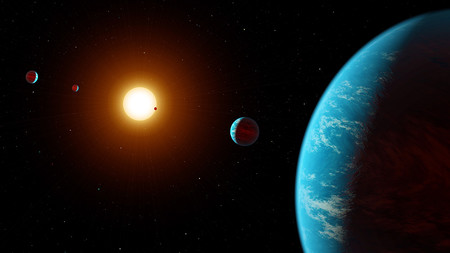
Planet hunting (courtesy: NASA/JPL-Caltech/R. Hurt)
By Michael Banks
This week the American Astronomical Society is meeting in Washington, D.C. At the conference it was announced yesterday that a citizen-scientist project called Exoplanet Explorers had used data from the Kepler mission to detect a new five-planet system.
The 27 authors include, among others, the astronomer and broadcaster Chris Lintott and the particle physicist and broadcaster Brian Cox. Exoplanet Explorers was featured prominently on the Australian TV show Stargazing Live in April and another author on the paper is the Australian TV presenter Julia Zemiro, who is affiliated with the Australian Broadcasting Corporation. You can read the paper here.
Still on space…after just three weeks on the International Space Station, the Japanese astronaut Norishige Kanai took to Twitter to note that he had grown by a massive 9 cm. It is usual for astronauts to grow slightly in space as the spine elongates in the microgravity environment, but it is usually only between 2 and 5 cm.
His fellow astronauts seemed a bit dubious and a quick measurement showed that he actually grew 2 cm instead. “I must apologize for this terrible fake news,” noted Kanai.
And finally, you might remember the viral-internet craze in 2016 in which people repeatedly tried flipping a partially filled bottle of water in the air to see if they could get it to land perfectly upright. At first sight, it appears quite improbable that the bottle would land in this way, but now physicists in the Netherlands have come to the rescue and worked out the physics behind the phenomenon.
By conducting experiments and devising a suitable model, they show that the redistribution of the water in the bottle as it rotates through the air increases the moment of inertia. However, by the conservation of angular momentum, this increase actually reduces the rotational velocity of the bottle, enabling a nearly vertical descent (in most cases).
The researchers say that the effect can be a useful classroom aid, and to avoid water being sprayed everywhere, they recommend instead demonstrating it with two tennis balls inside the bottle.
Guidelines
Show/hide formatting guidelines
this text was deletedwhere people live in harmony with nature and animals</q>
Some text